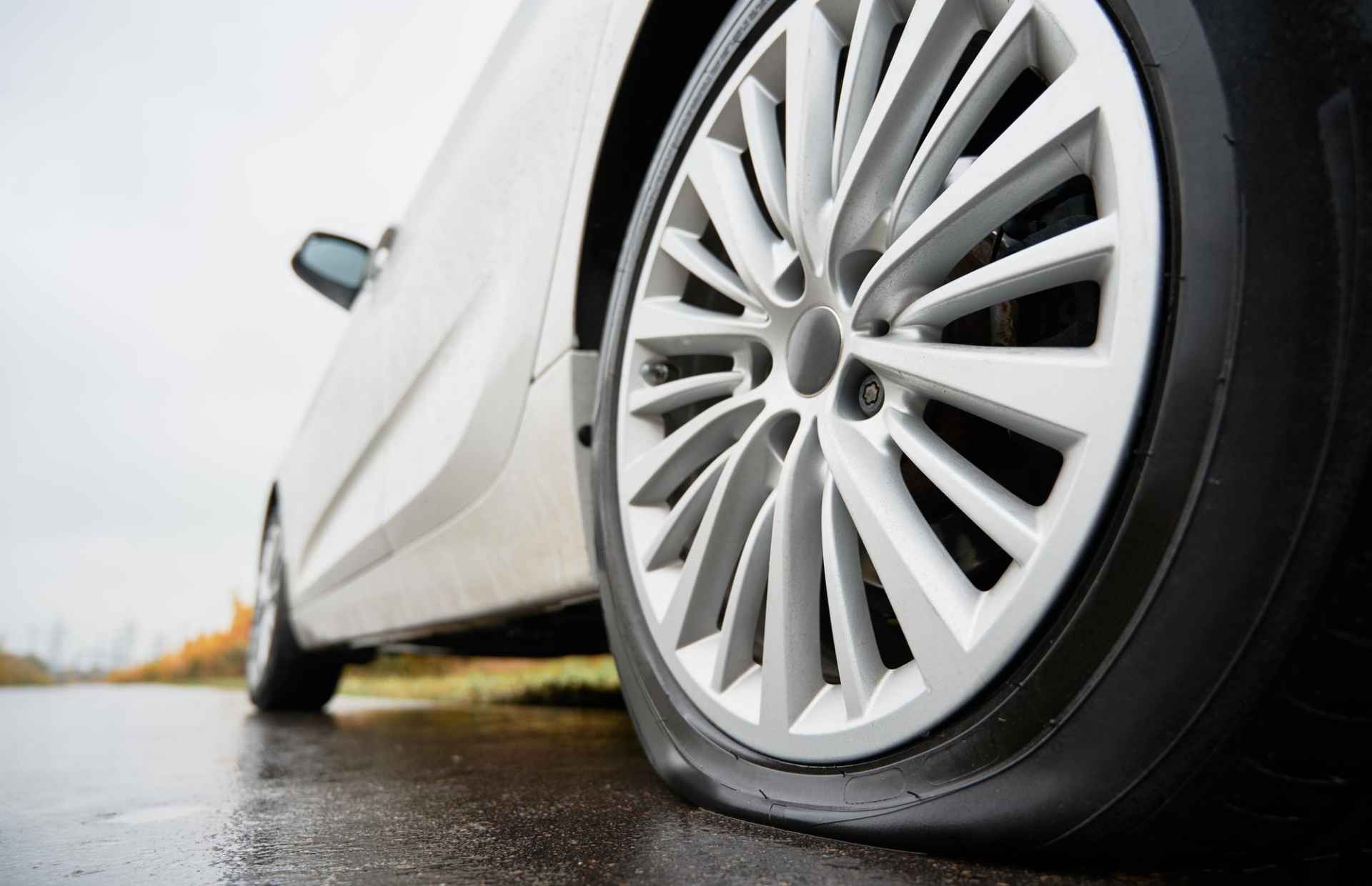- Our Firm
- Personal Injury
-
-
-
Personal Injury Lawyers
-
-
-
-
-
-
Injured in an accident? At Diamond & Diamond, our team of lawyers rely on their reputation in the field and extensive experience in personal injury to provide clients with a dedicated support system over the duration of their case.
-
-
-
-
-
HAVE YOU RECENTLY BEEN INJURED IN AN ACCIDENT?
-
-
-
- Corporate
- Class Action

Why You Shouldn't Use Winter Tires in Hot Summer Weather: Avoiding the Risks
Winter has always been unpredictable for motorists. However, thanks to winter or snow tires, driving through the season’s harsh conditions is manageable. Winter tires have enabled drivers to safely maneuver snowy and icy roads, making them indispensable during colder temperatures. As impressive as they are, however, using these tires beyond the winter season isn’t a good idea.
Many beginner motorists make the mistake of using their winter tires in hotter weather, going as far as using them in the summer. However, using winter tires during the summer months could lead to dangerous and costly issues.
In this guide, we’ll explain what winter tires are and why you shouldn’t use them in warmer weather, particularly in the summer. We’ll also provide tips on taking care of your winter tires during the other seasons.
|
Key takeaways
|
Understanding Winter Tires or Snow Tires
Winter or snow tires are specifically engineered to handle the unpredictable nature of the cold season. Unlike regular tires, these sets have unique features that allow motorists to drive safely in snowy, icy, and slushy road conditions.
Here’s a quick breakdown of what makes winter tires unique.
Rubber composition
Winter tires feature a rubber compound that maintains flexibility in low or cold temperatures. This material allows vehicles to generate better traction and handling, providing an excellent driving experience during winter.
Since all-season and summer tires are designed to withstand the heat generated on the road, they often stiffen in cold or freezing temperatures. Using them in extreme winter conditions will increase a car’s chances of sliding off the road or colliding with another vehicle.
Tread depth and patterns
Winter tires are also designed with different patterns than all-season and summer tires. These patterns are engineered with deeper tread depth and more sipes, which are tiny slits in the tires, providing excellent biting edges on ice.
These elements enable winter tires to dig deep into the snow and come into better contact with ice, which allows drivers to have more control over their vehicles. This means that they can easily accelerate, steer, stop, and corner in various winter conditions.
Moreover, a firm grip also means better road safety during winter. Since drivers have complete control over their vehicles, they can make evasive maneuvers or stop abruptly in case of emergencies.

Places That Mandate Winter Tire Use
Experts and manufacturers recommend using winter tires when temperatures go below 7 degrees Celsius (45 degrees Fahrenheit). In North America, many car owners follow this rule because of the heavy snow they experience. Some states and provinces actually mandate the use of snow tires.
For example, in Canada, Quebec is the only province that has a province-wide law that requires motorists to use winter tires from December 1 to March 15. However, they recommend that drivers wait until a few weeks after winter before installing all-season or summer tires.
All passenger vehicles, private and rental, including mopeds, motorized scooters, and motorcycles, that are registered in the province must follow this law. Owners who don’t comply may face a fine of C$200 to C$300.
British Columbia also requires motorists to use winter tires between October 1 to March 31 on specific highways, such as all roads in the North and Interior and select routes on the South Coast and Vancouver Island.
Exceptions to the Rule
There are certain exceptions to Quebec’s mandatory winter tire use. Generally, this rule doesn’t apply to heavy vehicles, utility vehicles, motor homes, farm machinery, motorcycles used as emergency vehicles, or spare tires.
The law also provides a seven-day exemption period for new cars, starting from when the new owner gets the vehicle from the dealer. This seven-day period also applies to vehicles with expiring leases, but the term must be one year or more.
Moreover, the law also exempts vehicles with removable license plates (X-plates) and those with a temporary registration certificate (transit). The latter’s exemption must be within the period of the certificate’s validity but not more than seven days after its issue date.
Meanwhile, the Société de l’assurance Automobile du Québec (SAAQ) can exempt certain vehicles from the winter tire regulation. To be exempt, car owners must obtain a certificate by filing a request with the agency.
Why Driving Winter Tires In Hot Weather Is Bad
Many car owners think they can use winter tires all year because of their unique material. However, driving with winter tires outside their intended weather conditions is actually dangerous and costly.
Below, we’ve listed some of the known disadvantages of using winter tires in the summer.
They wear quickly in warm temperatures
Winter tires are engineered with a special rubber compound that maintains flexibility in freezing and cold temperatures. This is one of the main features that allows the tires to roll better in winter road conditions.
Using them on dry roads at higher temperatures will only generate and transfer more heat to them, increasing their thermal load. With too much heat buildup, winter tires will experience faster wear. In severe cases, it can lead to a tire blowout.
If you experience a blowout while driving on a highway, you increase your chances of colliding with other vehicles or driving off the road. If it becomes apparent that you failed to perform adequate care, such as replacing winter tires with season-appropriate ones, and this caused the accident, then you could be liable for colliding with and damaging other vehicles.
They will cause traction and handling issues
As we’ve mentioned earlier, winter tires have a unique tread design that generates better traction and handling on snow buildup and icy roads. However, these depths, sipes, and grooves won’t be as effective if you drive on dry and mostly even roads because there won’t be any snow, ice, or slush to grip on.
When you drive winter tires on extremely dry pavement, you lose proper vehicle control, which can be dangerous in various situations. For example, you can’t make evasive maneuvers when trying to avoid other vehicles or road obstructions. You’ll also have difficulty turning at corners and curves, increasing the likelihood of a collision or running off the road.
Moreover, snow tires are optimized for shorter braking distances on winter roads or in cold weather. Driving them on hot summer pavements will compromise their braking capabilities, leading to increased stopping distances. When that happens, you risk hitting vehicles in front of you if they make any sudden stops.
They will cost more money
Some car owners think that it’s more cost-efficient to use winter tires all year because they won’t have to go through a tire change. However, using them outside their intended season will actually cost more.
For example, driving vehicles with winter tires in the summer tends to have more rolling resistance. This means that vehicles will consume more fuel to accelerate. When that happens, you’ll need to refuel more frequently throughout the season.
Poor performance from using winter tires might also cause the other components to wear out. Parts that are responsible for braking, handling, and turning may be affected by an underperforming car. When these devices fail, you’ll need to deal with costly repairs and replacements.
Additionally, using winter tires in the summer will likely lead to blowouts. If that happens, you’ll need to invest in new ones, which are already expensive to begin with.
Using Summer Tires and All-Season Tires for Hotter Temperatures
Driving with winter tires in other seasons is dangerous and can lead to various issues. Therefore, it’s best to swap them with tires that are suitable for hotter temperatures.
When driving in the summer, the best tire options are summer tires and all-season tires. However, each of them provides different benefits for various drivers. Below, we’ve listed the most significant differences between summer and all-season tires.
Summer tires
Summer tires or performance tires are excellent for delivering precise traction and handling on dry to wet roads. These tires offer superior grip, cornering, braking, and acceleration. They feature tread patterns with shallow and straighter grooves and continuous ribs, which is why they can maintain contact with the road surface more efficiently.
Summer tires feature a sticky tread compound that helps prevent hydroplaning in heavy rain. They also have a temperature capacity of 7 degrees Celsius (45 degrees Fahrenheit) and up. This means that while they’re more than capable of handling the summer heat, they won’t perform well during winter.
In fact, summer tires are built for speed and agility, making them the perfect set for high-performance vehicles, including electric vehicles, sports car models, and luxury sports utility vehicles (SUVs).
All-season tires
Unlike summer tires, all-season tires, or all-weather tires, are designed for year-round use. Car owners can still use them during winter, but not in areas that experience heavy snow or ice.
All-season tires are built for the average motorist and engineered for regular drivers to take them from point A to point B. They have a symmetrical pattern with deeper grooves and more voids scattered throughout the tires, which make them perfect for passenger vehicles, crossovers, SUVs, and light trucks.
While they perform well in warm weather, all-season tires don’t have the exact grip as summer tires. Since they’re not built for high performance, their steering, braking, and cornering capabilities are designed only for simple trips.
However, this trade-off allows these tires to provide traction for various conditions, including light winter roads. This is why all-season tires tend to have a longer service life than summer tires.

Taking Care of Your Tires During Summer
Higher temperatures can damage your tires differently. Fortunately, there are various steps you can take to prevent damage to your tires and ensure a seamless summer driving experience.
Whether you’re using summer or all-season tires, there are a few crucial tire care practices that you must do during warmer weather.
Inflate to the proper pressure
Regardless of the season, underinflated tires can endanger drivers in various ways. Without the correct tire pressure, tires will experience premature wear and tear, which could result in a tire blowout if it’s not addressed on time.
Not only do underinflated tires cause poor performance, such as inadequate traction and handling, but they also prevent the vehicle from accelerating properly, causing it to consume more fuel.
On the other hand, driving with overinflated tires is no different. Many beginner drivers tend to think that it’s better to have overinflated tires. This is wrong, as too much air will cause tires to round out on the tread section, making the center wear down faster than the outer edges. If that happens, your vehicle will experience poor traction, handling, and braking, increasing your chances of being involved in a car accident.
The key is to always maintain the recommended tire pressure for your set. Generally, you can find them posted on the driver’s door jamb or in your car’s user manual. If you’re using aftermarket tires, check with the manufacturer for their ideal pressure setting.
Once you’ve determined the amount of air your tires need, use a tire pressure gauge to periodically monitor your tires.
On the other hand, newer car models have a tire pressure monitoring system that notifies drivers when their tires are losing air. If you have this feature, you won’t have to worry about constantly checking the tire pressure with a tire pressure gauge. However, to be safe, it’s still best to use the device to check them occasionally.
Clean your tires
Tires are the dirtiest part of the vehicle. Unfortunately, buildup from elements, like brake dust and grime, could lead to tire deterioration and sidewall cracks if they’re not cleaned. Moreover, cleaning your tires in the summer is very important because there is more debris on the road.
For basic cleaning, you’ll need a bucket for the cleaning solution, a soft-bristled brush, microfiber towels, a hose, and a spray nozzle. If you want to do a deep cleaning, you’ll need a light-duty pressure washer, a waxing mitt, and a wheel brush.
Start by rinsing off the loose dirt with your spray nozzle from multiple angles. Then, scrub them with a soap mixture using a brush to clean off the hard-to-remove grime. Let the cleaning solution sit for a few minutes and rinse. Do this process as often as needed until you remove all dirt.
You can also go the extra mile and apply tire shine products to protect your tires. These items help give tires a clean and shiny look while protecting them from harmful UV rays, preventing damage, such as dry rotting, cracking, and stiffening. These products are much more crucial in the summer months to reduce the effects of the high temperatures.
You can also take your car to a professional and skip doing the process yourself. They can thoroughly clean your tires and make sure that there is no dirt buildup.
Look for anomalies
Inspecting your tires before an extended summer trip or in warmer temperatures is the best way to make sure you’re safe on the road. Check your tires regularly for damage and signs of improper inflation.
Some of the things you should watch out for include cracks, bubbles, lumps, or wear. You should also look out for foreign objects between the grooves because they might penetrate the rubber once you drive.
Once you detect these issues, take the necessary actions, such as inflating your tires and removing any object stuck in between. If you find something alarming that could be dangerous later on, it’s best to have your tires replaced by a professional.
You also risk getting a tire blowout if you don’t address these issues on time. If there’s a tire blowout, but you manage to maneuver out of harm’s way, you’ll still need to deal with the summer heat after you’ve pulled over to the side of the road.
Proper Care of Winter Tires When Not In Use
Using your summer or all-season tires will leave your winter tires idle for several months. If they’re handled or stored improperly, they might not be as robust and flexible when you use them again.
When you store your snow tires for the next season, you can take the following steps to maintain their quality:
Practice proper storage
Proper storage is crucial to make sure your winter tires have a long lifespan. Generally, you want to keep them in a climate-controlled space and never in an open area. Ideally, a garage or basement can provide the optimal temperature for your winter tires.
If you don’t have a garage or basement, you must look for a room that doesn’t experience frequent temperature fluctuations. Moreover, the room must be moderately ventilated, and the tires must be kept away from direct sunlight.
This is crucial because prolonged exposure to the sun while in storage will cause the tires to overheat, resulting in cracks in the rubber. You must also keep or shield your tires from any heat source.
Moreover, you must keep your tires away from motors or devices that emit ozone, which is a chemical that can damage your tires. These include generators, compressors, furnaces, switches, and central vacuum cleaners.
You should also keep your tires away from solvents, fuels, and lubricants.
Stack them horizontally
Owners can position their winter tires in many ways. Some hang them on hooks or racks, while others stack them on their sides. However, when keeping your winter tires in storage, the best way is to store them vertically or upright. Here’s why.
When you hang your tires for an extended period of time, you risk losing the rubber’s shape. Stacking them on top of each other will likely result in flat spots from prolonged compression. So, the best way to store your tires is to put them in a standing position. It’s the ideal placement because they won’t stress your tires since they’re not bolted to a car. This means that they can maintain their shape for a long time.
It’s also an excellent idea to rotate them periodically when in storage. Doing so will help to distribute their weight evenly and preserve tire pressure for long periods. You must also place a barrier between each tire to prevent them from leaving flat spots.
Clean and cover
After swapping your snow tires for summer or all-season ones, it’s best to clean them before storage. This way, you prevent any dirt buildup from causing long-term damage to your tires.
Use detergent, water, and a tire brush to remove any grime that accumulated over the winter. Avoid applying any dressing product on your tires before storing them. Since these tires are designed to resist various stressors in storage, adding such chemicals may reduce their lifespan.
Next, you must cover your tires when storing them. While some use airtight plastic bags for each tire, consider investing in tire covers. A high-quality tire cover can protect your tires from harmful elements, which can prevent premature drying and cracking.
Before covering them, make sure that the bag doesn’t contain any moisture or air, which could affect the tires when they’re in storage. Therefore, it’s best to wipe the insides first and then use a vacuum cleaner to remove any moisture or air.
Next, cover the tires and tape them shut. This is important because an airtight environment will reduce oil evaporation from the rubber compounds, which can better preserve your tires until the next season.
Tire rotation is crucial to ensure that wheels don’t wear unevenly. It helps provide smoother rides and safer handling. Plus, it helps extend a tire’s service life. Not all tires require this step. However, if you find in your manual or from your dealership that it’s necessary, be sure to rotate your tires before heading out for a summer trip.
Pro Tip
Utilize What’s Best for the Season
Choosing a suitable tire set for the current season is important for an efficient and safe drive. Using the wrong tires, such as driving with winter tires during the summer, will lead to costly issues. In some cases, they can lead to fatal accidents, which could have been avoided had owners been more responsible with their tires.
If you were injured in a car accident because of an irresponsible driver, having proper legal representation is important so that you’re compensated for your injuries. Visit Diamond & Diamond to learn more about personal injury and how they can get you the compensation you deserve.
Car accidents are challenging to deal with, regardless of the season. If you’re involved in one, ensure you have the correct legal partner to help you. Consult our experts at Diamond & Diamond.
Need a Lawyer?
We are here 24/7 to address your case. You can speak with a lawyer to request a consultation.
1-800-567-HURTGet started with a free consultation
OUR TEAM
- Ishmeet Sandhu
- Nolan Bachmann
- Annamarie Demaj
- Jeffrey Hum
- Tofunmi Adeyeye
- Alessia De Gasperis
- Amandeep Chawla
- Jeremy Tsoi
- Kimiya Razin
- Shir Zisckind
- Gray Sinden
- Shelly Bard
- Christian Brown
- Daly Canie
- Tanveer Sohal
- Prianka Virdi
- Noah Brownstone
- Justin Kaminker
- Harinder S. Bhatti
- Craig Yargeau
- Kiran Birk
- Amit Singh
- Andrei Teju
- Maria Zahid
- Matthew Douglas
- Jacob Elyk
- Harry Gill
- Kristina Olivo
- Egi Bano
- Cam Woolley
- Charles Thompson
- Alexandra McCallum
- John Sime
- Allan Cocunato
- Patrick Poupore
- Erika Henderson
- Marina Korshunova
- Brandon Handelman
- Regeena Alapat
- Ryna Kim
- Natalia Poliakova
- Isaac Zisckind
- Manpreet Bhogal
- Mathura Santhirasegaram
- Nikolai Singh
- Sandra Zisckind
- Jeremy Diamond
- Michael Blois
- Darryl Singer
- Nadia Condotta
- Tinashe Madzingo
- Megan Armstrong
- Veronica D’Angelo
- Corey J. Sax
- Scott Tottle
- Steven Wilder
- TJ Gogna
- Jillian Carrington
- Joshua Himel
- Simon Diamond
- Cory Rubin
- Simon Mariani
- Brandon Greenwood
- Basil Bansal
- Nastassia Ivanova
- Tania Fleming
- George Laloshi
- Patrycja Majchrowicz
- Diana Iakossavas
- Dior Africa
- Alex Ragozzino
- Liana Saccucci
- Richard J. Chang
FAQs on Why You Shouldn't Use Winter Tires in Hot Summer Weather
What's the typical lifespan of winter tires?
Generally, snow tires can last for four to six winters. However, their lifespan depends on driving style, road conditions, and how they’re stored when they’re not in use.
When can you remove winter tires?
Unless you live in places where winter tires are required, you can use the seven-degree rule to know when to change back to all-season or summer tires. This means that if the temperature rises above seven degrees Celsius, and it continues to rise for a few days, you can take your car to an auto shop to swap out your winter tires.
Can you use two winter tires instead of four?
To maximize the full benefit of winter tires, always use four. If you only use two, you might experience various performance issues while driving in harsh winter conditions.
Moreover, don’t mix tires of different sizes, treads, or construction. This also means that you shouldn’t mix and match your winter, all-season, and summer tires.
NEED A LAWYER? CONTACT OUR TEAM TODAY
Chat Now
OR CALL NOW FOR A FREE CONSULTATION
 1-888-INFO-LAW
1-888-INFO-LAW
Head Offices
Main Offices
Barrie
Main Office
168 Bayfield Street
Calgary
Main Office
1331 Macleod Trail SE, Suite 645
Edmonton
Head Office
4246 97 Street NW, Unit 103
Halifax
Consultation Office
1701 Hollis St
London
Main Office
256 Pall Mall St, Suite 102
Oshawa
Consultation Office
50 Richmond Street E, Unit # 108 B
Ottawa
Main Office
955 Green Valley Crescent, Unit 315
Sudbury
Main Office
31 Larch Street, Unit 300
Timmins
Main Office
120 Cedar Street South, Unit 002A
Toronto
Head Office
255 Consumers Road, 5th Floor
Vancouver
Head Office
1727 West Broadway, Suite 400
Windsor
Main Office
13158 Tecumseh Rd. E. Unit 3B
Additional Areas Served
Ontario
- Ajax
- Alberta
- Aurora
- Barrie
- Belleville
- Bowmanville
- Brampton
- Brantford
- Brockville
- Bracebridge
- Bradford
- Burlington
- Burnaby
- Calgary
- Chatham
- Cobourg
- Collingwood
- Cornwall
- Durham
- Edmonton
- Elliot Lake
- Etobicoke
- Georgetown
- Guelph
- Hamilton
- Huntsville
- Kanata
- Kelowna
- Kingston
- Kitchener
- Leamington
- London
- Markham
- Milton
- Mississauga
- Muskoka
- Niagara Falls
- Newcastle
- Newmarket
- North Bay
- North York
- Oakville
- Orangeville
- Orillia
- Oshawa
- Ottawa
- Owen Sound
- Parry Sound
- Perth
- Peterborough
- Pickering
- Prince Edward County
- Richmond
- Richmond Hill
- Sault Ste Marie
- Sarnia
- Scarborough
- St. Catharines
- St. Thomas
- Stouffville
- Sudbury
- Surrey
- Thunder Bay
- Timmins
- Toronto
- Uxbridge
- Vancouver
- Wallaceburg
- Waterloo
- Welland
- Whitby
- Windsor
- Woodstock













